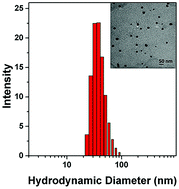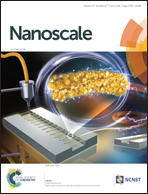Fluorescence resonance energy transfer (FRET) based nanoparticles composed of AIE luminogens and NIR dyes with enhanced three-photon near-infrared emission for in vivo brain angiography†
Abstract
Near-infrared (NIR) fluorescence is very important for high-contrast biological imaging of high-scattering tissues such as brain tissue. Unfortunately, commercial NIR dyes are excited usually by visible light, and their multi-photon absorption (MPA) cross-sections are small. Here, we design new co-encapsulated NIR nanoparticles (NPs) with a large three-photon (3PA) absorption cross-section. A form of aggregation-induced emission (AIE) luminogen (AIEgen), 2,3-bis(4′-(diphenylamino)-[1,1′-biphenyl]-4-yl) fumaronitrile (TPATCN), is introduced as the donor, and a form of NIR dye, silicon 2,3-naphthalocyanine bis-(trihexylsilyloxide) (NIR775), is adopted as the acceptor. Under the excitation of a 1550 nm fs laser, TPATCN–NIR775 NPs demonstrated a bright three-photon fluorescence centered at 785 nm. The energy transfer efficiency of the TPATCN–NIR775 NPs was calculated to be as high as 90%, which could be attributed to the good spectral overlap between the emission of TPATCN and the absorption of NIR775. By injection with TPATCN–NIR775 NPs, a vivid 3D reconstruction of mouse brain vasculature was obtained with even small blood vessels clearly visualized. The design strategy used for the co-encapsulated AIE–NIR NPs would be helpful in synthesizing more NIR probes for deep-tissue biological imaging in the future.



 Please wait while we load your content...
Please wait while we load your content...